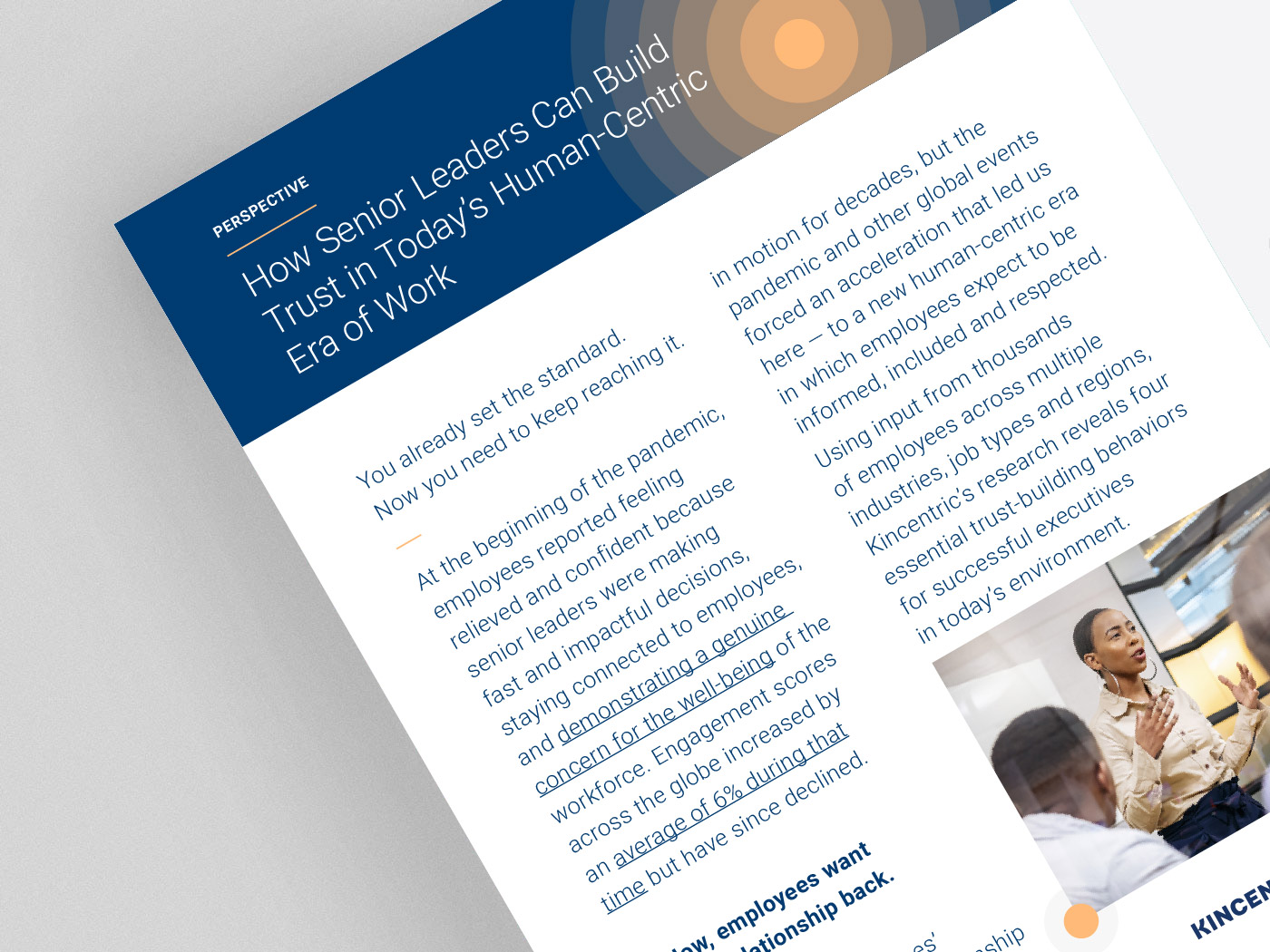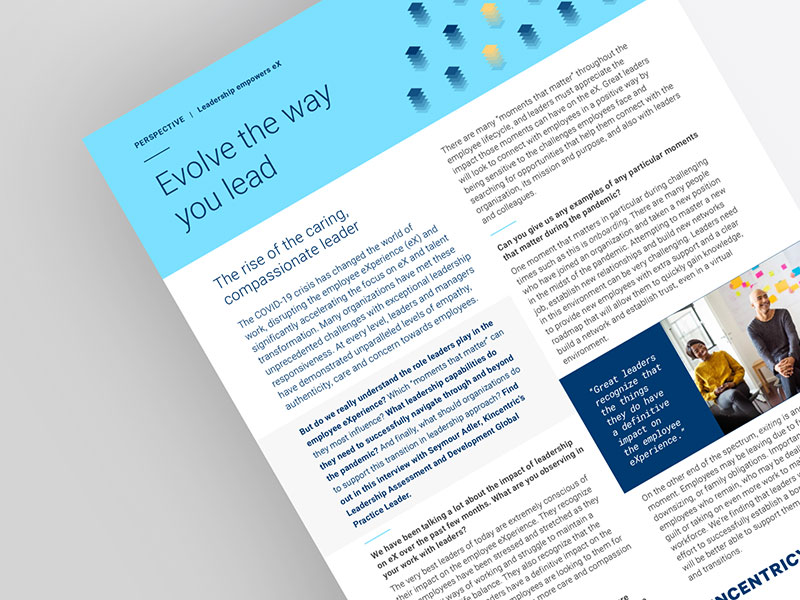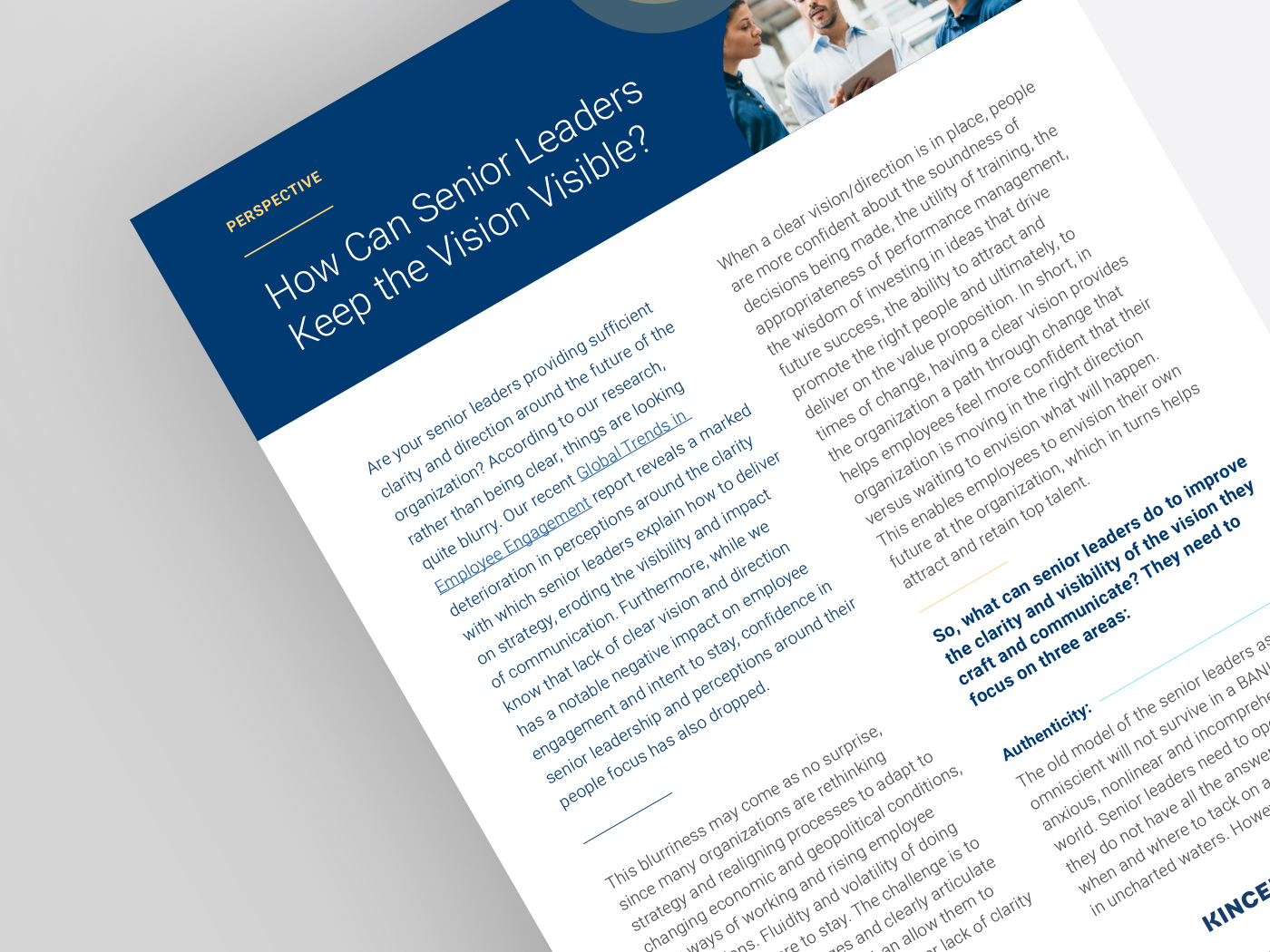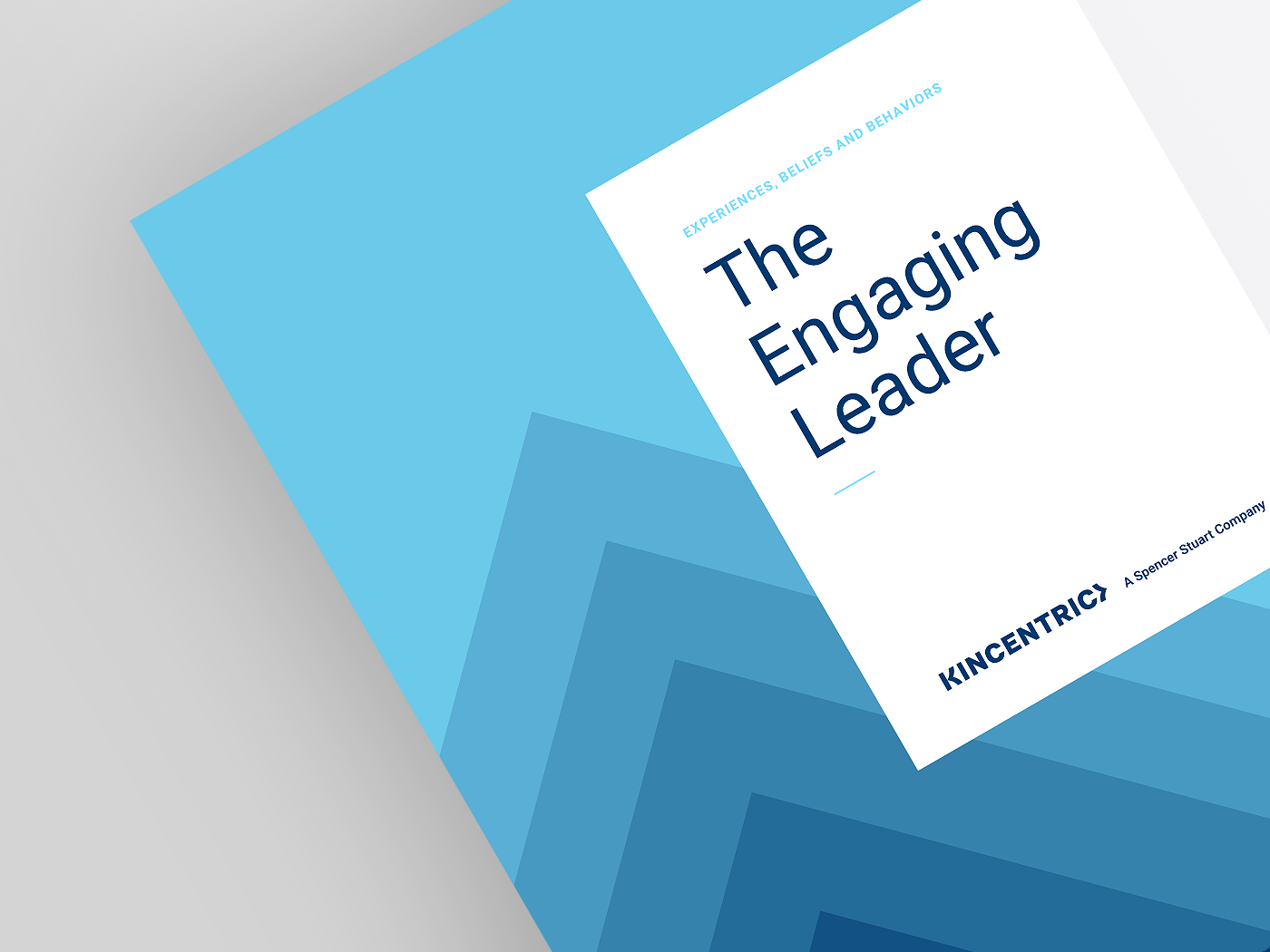
You already set the standard.
Now you need to keep reaching it.
At the beginning of the pandemic, employees reported feeling relieved and confident because senior leaders were making fast and impactful decisions, staying connected to employees, and demonstrating a genuine concern for the well-being of the workforce. Engagement scores across the globe increased by an average of 6% during that time but have since declined.
Now, employees want that relationship back.
Major shifts in employees’ expectations for their relationship with senior leaders have been in motion for decades, but the pandemic and other global events forced an acceleration that led us here — to a new human-centric era in which employees expect to be informed, included and respected.
Using input from thousands of employees across multiple industries, job types and regions, Kincentric’s research reveals four essential trust-building behaviors for successful executives in today’s environment.
 Prioritize high-quality interactions with your people
Prioritize high-quality interactions with your people
Make face-to-face communication a priority — even if it’s via video calls. Attending a portion of department or team meetings, eating lunch with employees in the cafeteria, site visits and all-company meetings are effective methods.
Use the time to foster a sense of community, build camaraderie, express appreciation and share details about the company’s strategy for achieving success in the future.
And don’t skimp on the Q&A. That part of the interaction is your prime opportunity to build trust, so stay after meetings to keep answering questions if employees are still asking them.
“When our president takes the time to visit, chat, shake our hands and say ‘thank you,’ I feel like he cares — like we matter to him and he’s truly grateful for the work we’re doing.“
– A machine operator at an international food packaging company
 Clarify the organization’s strategic plan
Clarify the organization’s strategic plan
Establish clear strategic business priorities and follow them consistently. This reassures employees that you have a solid plan to guide the organization toward success, and we’ve found employee engagement levels are 6.5X higher (84% vs 13%) at organizations whose leaders provide a clear direction for the future.
Clear priorities followed consistently also improve employees’ faith in the capability of the leadership team and boost productivity across the organization. When you’re challenged by a breakdown of collaboration among teams, insufficient accountability or action, or sluggish decision making, it’s likely that a lack of clear business priorities is a contributing factor.
“When executive management shared the new plan for hitting the company’s long-term goals, the chaos finally lifted. We had something to work from. We could all get on the same page.”
– Mid-level leader at a large utility company
 Communicate with care, honesty and intention
Communicate with care, honesty and intention
Work with your communications team to make sure your messages are straightforward, delivered in the proper format and timed properly.
Be sure the content of your messages is complete and honest. Today’s workforce is especially adept at detecting the slightest attempt at deception — a regrettable misstep for any leader looking to build trust. In situations where you’re unable to disclose important details, be up front about it. Tell them why you can’t share more and when you’ll be able to provide more information.
When communicating about topics that could be seen as a risk to employees’ reputations or job stability — like culture transformation or M&A activity — always choose a format that allows employees to interact with you and ask questions. Strive to be as transparent and forthcoming as possible and be sure to acknowledge any fears or concerns expressed. This can help establish trust and provides your employees with a sense of control over their circumstances.
And always share important news with employees before they find out from others. Notifying them early is a sign of respect.
“Our CMO [Chief Marketing Officer] is really good about emailing employees with important company news before she tells the media. I like that she understands how important that is.”
– An employee in a client-facing role at a financial services firm
 Gather input directly from employees
Gather input directly from employees
Use existing touchpoints to ask employees to share their thoughts on a topic that can advance company priorities or a decision you need to make that will impact them directly. Be sure to express gratitude and follow through on what you learn from them. This helps them feel heard and respected.
Trust is built when it flows both ways, so trusting employees to help you solve tough challenges is a perfect opportunity to strengthen the relationship while collecting the insight you need to make impactful business decisions.
If there are engagement surveys or other forms of research being conducted with your people, insist on hearing the presentation of results and recommendations firsthand. One layer of interpretation is one layer too many, and you risk misunderstanding the situation, taking misguided action or taking no action at all.
“New things always work out better when upper management takes the time to talk to us before making their final decision. You can see their whole outlook change once they realize how it will actually impact us and our work.”
– A manufacturing supervisor
You’re not going to get it right every time. There will be times you wished you had handled things differently, and that’s OK.
Consider enlisting the help of an executive coach and try to routinely integrate one or two trust-building behaviors into every employee interaction. Even a few small changes will improve your relationship with employees when you apply them consistently over time.
The key is to be mindful of the status of the relationship. As soon as it begins to feel adversarial, recalibrate your leadership approach right away. Once trust starts to slip, it’s difficult to recover.
Stay the course. It will pay off. Outdated leadership styles characterized by dominance, distance and isolated decision making are likely to cause employees to burn out, disengage and look elsewhere. But leaders who make employees feel respected, included and informed will be the clear winners in today’s new human-centric era of work.
We would like to thank Laura Heathcock, Kamela Lupino and Jessica Walter, MS, APR, for their contributions to this article.

Many organizations have met the unprecedented challenges of COVID-19 with exceptional leadership responsiveness, demonstrating empathy, care and concern.


An engaging leader profile is built through the leader’s guiding beliefs, displayed behaviors, and critical experience.
Want the latest insights delivered straight to your mailbox?